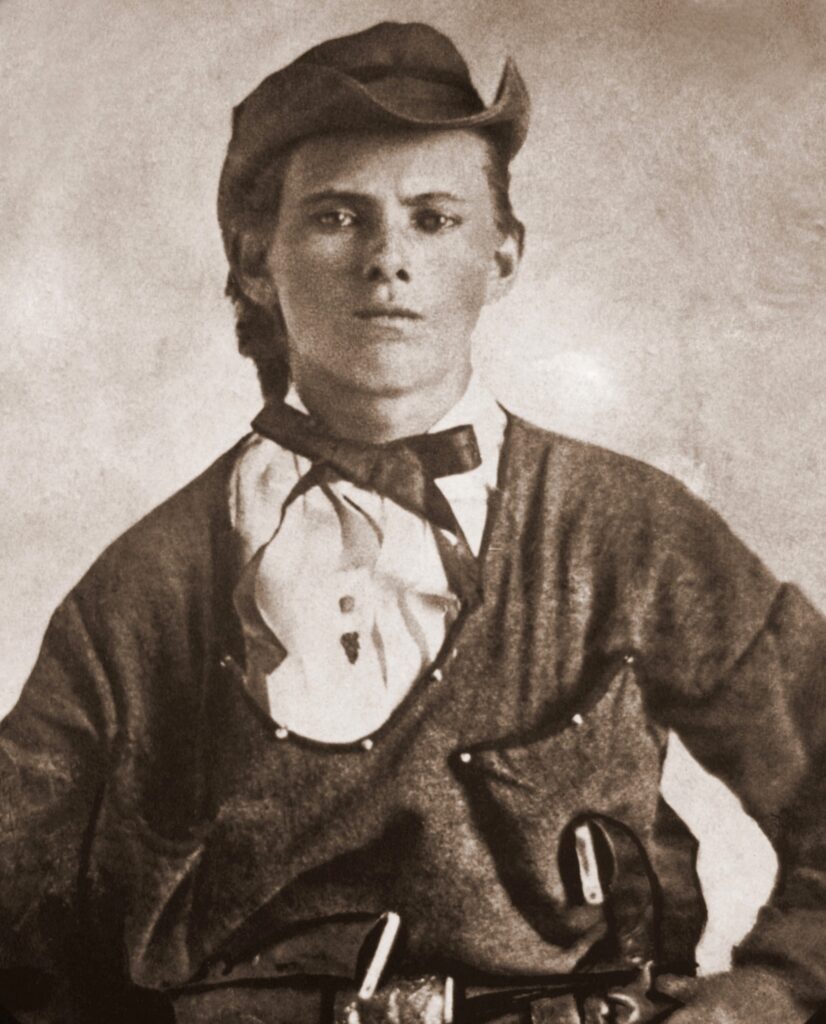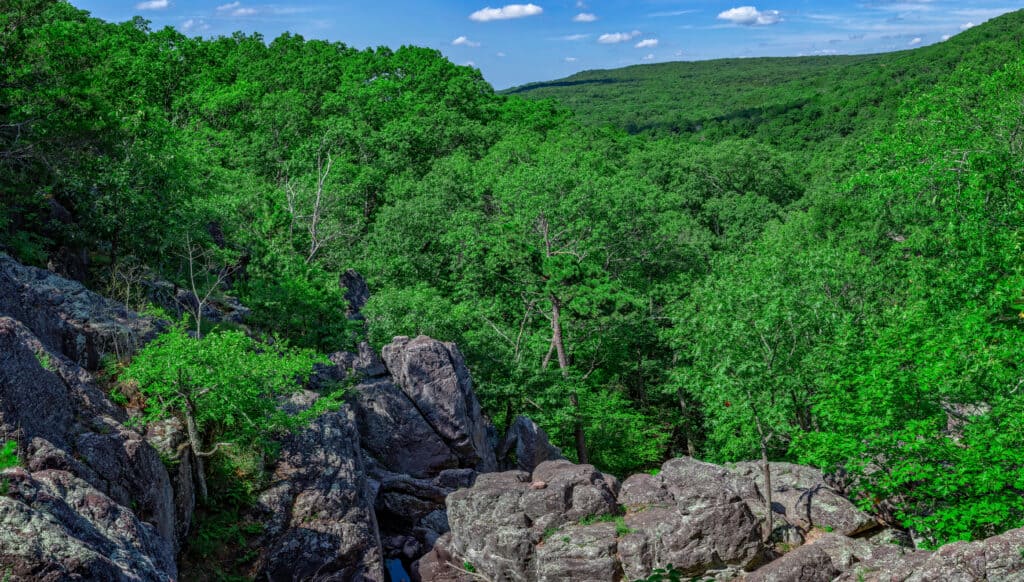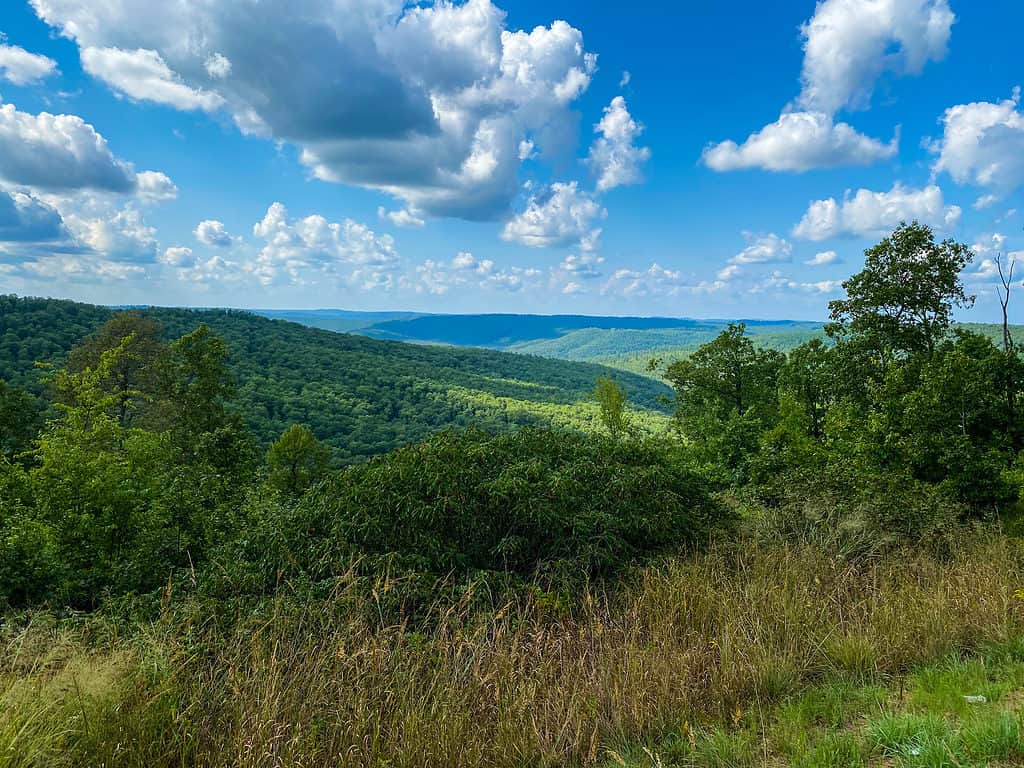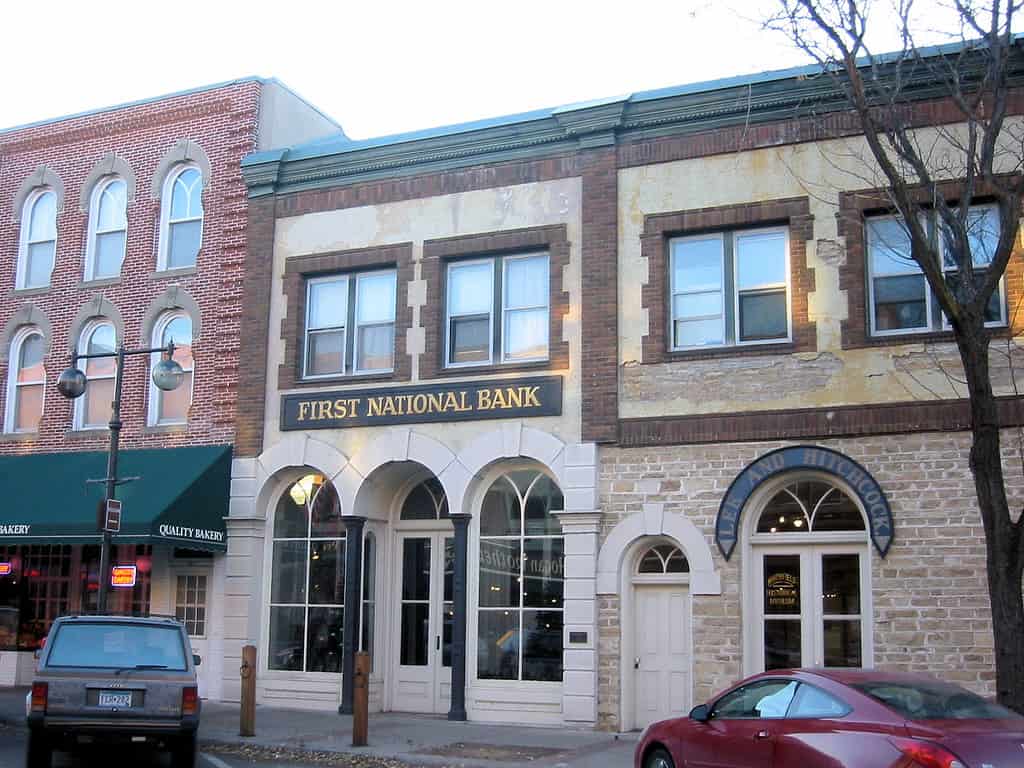Introduction
Jesse James is unarguably one of the most influential characters of the Wild West era. From bank and train robberies to treasure hunts, Jesse James has left an impact that many recognize in film, song, and literature. While his treasure is yet to be encountered, a series of smaller discoveries with possible links to Jesse James have sparked speculation and rumor across the country. There is no doubt that Jesse James’s notorious reputation has inspired conspiracists and treasure hunters to search for his riches left behind. Discover more about the outlaw Jesse James and find out where his treasure might be buried.
Who was Jesse James?
Jesse James was born on September 5, 1847, in the state of Missouri. Jesse, alongside his brother Frank, became an infamous outlaw in the American West. After the Civil War began in 1861, Jesse, who was a Southern sympathizer, joined “Bloody” Bill Anderson’s guerilla band. When the war came to an end, Jesse, Frank, and eight men joined together to achieve the title of outlaws.
In 1866, the group committed their first major outlaw crime by robbing a bank in Liberty, Missouri. Over the course of several years, Jesse and his followers robbed numerous banks and trains throughout the American West. Jesse claimed that his crimes were a result of persecution following the Civil War. He believed that officials targeted him because he was a Southern sympathizer.
In 1876, Jesse and Frank lost their entire crew during the robbing of the First National Bank in Northfield, Minnesota. The men were either killed or apprehended, and only the James brothers came out unscathed. Three years later, Jesse rounded up a new group to help him continue his outlaw lifestyle. After more robberies were committed, the governor of Missouri declared a promise of $10,000 to anyone who caught or killed the James brothers.
Robert Ford, whose brother had joined Jesse’s group of outlaws, set out to hunt Jesse down. At the time, Jesse was using a false name and living in St. Joseph, Missouri. Ford killed the notorious outlaw in his own home in 1882. In St. Joseph, Jesse died from a shot to the back of the head as he was hanging a picture on a wall in his home. While Ford was convicted of Jesse’s murder and given the death sentence, he received a gubernatorial pardon. The pardon didn’t save Ford, though. He was shot and killed by Edward Capehart O’Kelley, who is often thought of as Jesse’s avenger.

Jesse James was born in Missouri in 1847. Jesse and his followers robbed numerous banks and trains throughout the American West.
©Everett Collection/Shutterstock.com
Where did Jesse James Bury his Treasure?
In the Ozarks of Missouri, many had believed for several years that Jesse James buried his treasure, which was stolen during a series of robberies, in his home state. While it seemed to be nothing but a legend, one man was believed to have discovered his treasure. Gads Hill was the location of one of Jesse James’s infamous robberies. Near it, a woodcutter reported that he had found paper money, a rifle, and old coins in a cave-like opening on the side of a hill. A rumor circulated that the man had discovered treasure worth up to $100,000.
Unfortunately, the discovery had been exaggerated. The woodcutter found only a rifle and a few old coins, but none of them were worthy of being called treasure. However, the rumor had already run its course, and people across the nation began to speculate about where Jesse James’s stolen treasure could be. From then on, numerous theories were proposed and developed.
Missouri
The most common and widely accepted theory about where Jesse James’s treasure might be is that it’s still somewhere in the hills of Missouri. Most believe that Gads Hill, the location of one of Jesse’s train robberies, hides the treasure. After the woodcutter’s encounter near Gads Hill, many people assumed that Jesse James could be connected to the discovery. Even if the story had been exaggerated, the humble findings of the woodcutter were enough to keep the rumor alive. While no one has found Jesse’s treasure in Gads Hill, there’s no denying that it could still be out there.

The most common and widely accepted theory about where Jesse James’s treasure might be is that it’s still somewhere in the hills of Missouri.
©Steven Schremp/Shutterstock.com
Utah
In a desert in Utah, some report that evidence has linked Jesse James to the Knights of the Golden Circle, which was a secret society whose goal was to create a new country in which slavery was permitted. As a result, Jesse James’s treasure would be, allegedly, used to fund a war between the Knights of the Golden Circle and the U.S. government. A victory for Knights of the Golden Circle would mean secession and sovereignty over a country in which slavery was legal.
The evidence found in Utah is a carving of the name “J. H. Squires” in a rock. Some conspiracists assert that the term “Squire” is meant to mean “Knight.” This correlation would connect the person who carved the name to the Knights of the Golden Circle. Supposedly, the carving would translate to “Jesse Knight,” naming Jesse James as a Knight within the secret society.
However, anyone who would try to dig near the site of the rock for treasure would likely be arrested. The Bureau of Land Management prohibits treasure recovery efforts in this area. Furthermore, many have rumored that the government has claimed many of the sites that had previously belonged to the Knights of the Golden Circle. By way of conspiracist reasoning, the government has claimed these lands to recover Jesse James’s hidden treasure for itself. The only way to discover the truth would be to become an outlaw, illegally digging up the site in the true spirit of Jesse James.

Some believe Jess James’ treasure is buried in the Utah Desert, but treasury recovery efforts are illegal here.
©Victor Maschek/Shutterstock.com
Oklahoma
Cement, Oklahoma is a sleepy town in the West, but it is also believed to be the first clue in finding Jesse James’s treasure. Cement is near the place where Frank James, Jesse’s brother, had lived for some time. Buzzard’s Roost, which is a rock formation in Cement, has been speculated to be the start of a series of clues that lead to the treasure. The legend of Buzzard’s Roost began decades ago and was passed down from generation to generation in Cement.
Supposedly, visitors of Buzzard’s Roost will encounter a series of carvings that they can follow to find treasure. While no money has been found at the site or on the journey, other relics have been discovered. For instance, half a pistol, a kettle, and buckles from a saddle have all been encountered while following the series of carvings. These simple findings have caused people to believe that the treasure is still out there if they search hard enough.

Buzzard’s Roost is on Lake Murray and is thought by some to be where Jesse James hid his treasure.
©Kit Leong/Shutterstock.com
Arkansas
Treasure in Arkansas is also possible, as some believe that Jesse James left gold for members of the Knights of the Golden Circle in this state, too. Furthermore, after a train robbery in 1874 by Jesse James, it has been alleged that the James brothers and their crew hid in Indian Cave. Indian Cave is located above DeSoto Park in the state of Arkansas. Some claim that Jesse James hid his treasure in the Brushy Mountains, just 30 miles northwest of Indian Cave.
One piece of evidence for these claims is that Jesse James had owned a gold watch from the train robbery in Arkansas at the time of his death. Thus, some estimate that Jesse James must have hidden the other stolen goods near the site of the train robbery since they weren’t in his possession. In 1953, treasure hunters after Jesse James’s fortune heard conjecture that a strongbox belonging to Jesse James had been deposited in the Black River. The group went and dug for the strongbox, but the hole they dug kept filling with water. Therefore, the group couldn’t find the strongbox, meaning that it could still be somewhere in the Black River of Arkansas.

Jesse James’ treasure is thought by some to be buried in one of several locations in Arkansas.
©iStock.com/Michael Dean Shelton
The Effect of Jesse James on American Culture
While Jesse James’s feats were impressive, much of the popular knowledge that circulates about Jesse and his crew is exaggeration and speculation. Jesse was more than an outlaw; he was one of the key figures that influenced books and media about the Wild West. Many see Jesse as a Robin Hood figure, but this is a misconception. Jesse James robbed the rich, but he did not give to the poor. Nevertheless, Americans then and now have placed the name “Jesse James” on a pedestal. Many see him as a persecuted man who defied authority for the sake of rebellion and of upholding individual values.
The hard truth about Jesse James is that his beliefs and values would not be praised according to present-day standards. He grew up in a family that owned slaves, fought for the Confederacy during the Civil War, and continued to uphold racist ideals throughout the remainder of his life. Jesse’s defiance of authority was solely based on his belief that he was being oppressed by officials for holding Confederate values. Jesse’s motivation for becoming an outlaw was anything but righteous. Even so, people can’t help but portray him in the media as an anti-hero.
Myths About the Man
The reason behind Jesse’s notorious personality and praised fame is likely due to the legend that surrounds the truth. For instance, many believed that he helped the poor, a myth that was further spread through the folk song “Jesse James.” The song calls Jesse “a friend to the poor” and says that Jesse would “never see a man suffer pain.” Truthfully, Jesse did not support the poor, and he killed many people throughout his outlaw career. After his death, Jesse’s name became a national symbol, leading to the creation of popular novels, short stories, and media. Cultural depictions of Jesse James call him a protector, illustrate him as a hero, and implicitly liken him to Jesus Christ. In fact, many gave Robert Ford, who was Jesse’s killer, the name “Judas,” as he betrayed the Christ-figure, Jesse.
Overall, though, Jesse James has been included in all mediums of popular culture and literature. He appears in comics, video games, books, and plays. Dozens upon dozens of movies and television shows either reference the outlaw or pinpoint him as the main character. When it comes to music, the list of references to Jesse James seems endless. However, the folk song written in his honor is unarguably the most well-known mention of Jesse in music.
Will Jesse James’s Treasure Ever be Recovered?
Considering the numerous speculations, searches, and failures related to Jesse James’s treasure, it’s difficult to say whether the riches will ever be found. After all, the $50 million fortune, if buried, is likely to have been distributed in small amounts throughout the American West. Furthermore, it’s possible that Jesse James never buried any treasure at all. No one knows for certain where it could be nor how to discover it. The actual act of treasure burial by Jesse James is speculation of its own. Much like Jesse James’s own reputation and list of accomplishments, his treasure might be an exaggerated legend.
How Much Money Did Jesse James Steal?

The raid of the
First National Bank
not only resulted in the disbanding of the original gang but no money was taken.
©Elkman, CC BY-SA 4.0 – License
Jesse James’ first gang, which ran from 1861 until the time of its dispanding in 1876, was known as the James-Younger Gang. During this time, it is estimated that Jess and his brother Frank participated in a multitude of robberies that spanned over 11 states in the central region of the United States, some of which were:
- At least twelve bank robberies
- Seven train robberies
- Four stagecoach heists
Their supposed first heist, which occurred in 1866 in Liberty, Missouri, was believed to have been their largest take, where they made off with $60,000.
Jesse James started a new group of outlaws around 1879 that continued robbing until 1881, which was the last robbery of James. During this time, they participated in one stagecoach heist, three train robberies, and the robbery of one store and a federal paymaster.
With the amounts robbed from his first and second gangs, it is thought that during this 17-year career, Jesse James, together with his gangs amassed close to $500,000. It is thought that Jesse James had a net worth of around $200,000, which is the equivalent of almost $6 million today.
The photo featured at the top of this post is © Randy Kostichka/Shutterstock.com
FAQs (Frequently Asked Questions)
Who was Jesse James?
Jesse James was an outlaw in the Wild West; he and his gang were responsible for numerous bank and train robberies.
Where is Jesse James’s treasure buried?
No one can say for sure where Jesse James’s treasure remains, but states like Arkansas, Utah, Oklahoma, and Missouri claim to have connections to Jesse’s fortune.
Who killed Jesse James?
Robert Ford shot and killed Jesse James in St. Joseph, Missouri.
Thank you for reading! Have some feedback for us? Contact the AZ Animals editorial team.






